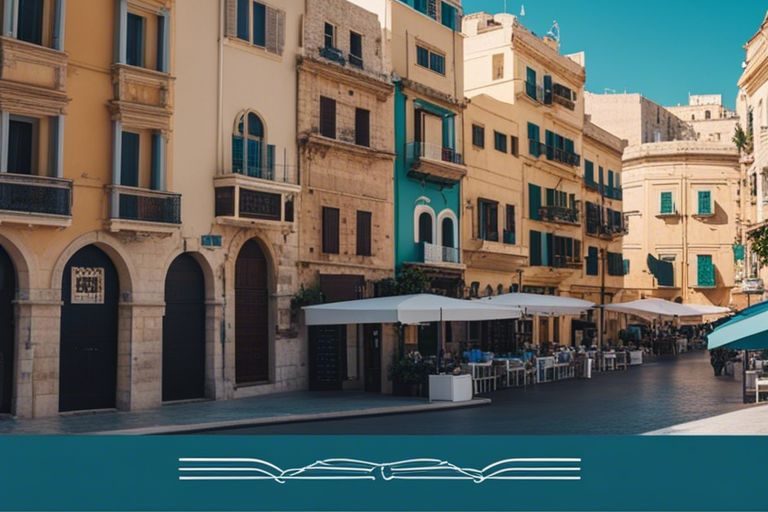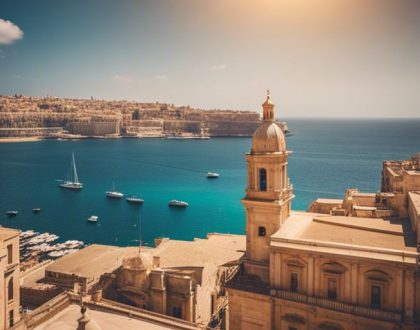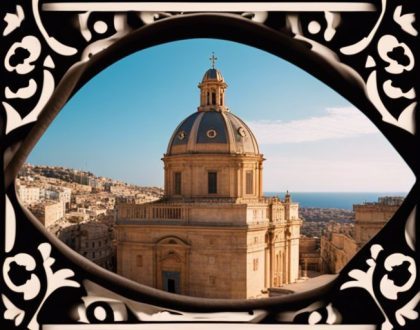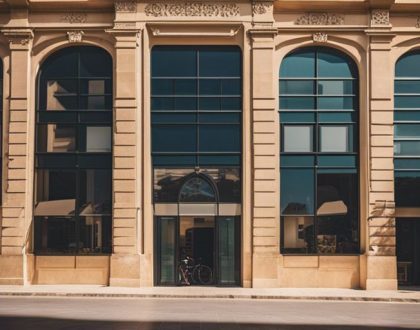A Local’s Guide to Enjoying Malta

Most travelers agree that Malta is a hidden gem in the Mediterranean. As a local, I have insider knowledge that will help you make the most of your trip to this stunning island nation. From exploring historic sites to indulging in delicious cuisine, there is something for everyone to enjoy in Malta.
Getting to Know Malta
Geography and Climate
Climate: Malta is a small island nation situated in the Mediterranean Sea, just south of Italy. The climate in Malta is typically Mediterranean, which means hot, dry summers and mild, wet winters. The summer months, from June to August, are the most popular time to visit Malta, with temperatures often reaching over 30 degrees Celsius. However, the best time to visit Malta is during the shoulder seasons of spring and autumn when the weather is still pleasant but the crowds are thinner.
Culture and Language
With its rich history dating back thousands of years, Malta boasts a unique mix of cultural influences from the Phoenicians, Romans, Moors, Knights of St. John, French, and British. This diverse heritage is evident in the architecture, cuisine, and traditions of the Maltese people. The official languages of Malta are Maltese and English, with most locals being bilingual. English is widely spoken across the island, making it easy for tourists to communicate with the locals.
Getting to know the culture and language of Malta is vital for visitors looking to immerse themselves in the local way of life. Be sure to explore the charming villages, try traditional Maltese dishes like rabbit stew or pastizzi, and engage with the friendly locals to learn more about their customs and traditions.
Choosing Where to Stay
Clearly, one of the most important decisions when planning a trip to Malta is choosing where to stay. The island offers a wide range of accommodation options, from luxurious hotels to cozy B&Bs and budget-friendly hostels.
Types of Accommodation
- For those seeking luxury and top-notch service, there are plenty of 5-star hotels dotting the coastline.
- Travelers on a budget can opt for charming guesthouses or backpacker hostels.
- Those looking for a more local experience might consider renting a traditional farmhouse or villa.
- For a touch of nostalgia, boutique hotels in historic buildings offer a unique stay.
- Alternatively, camping sites provide a back-to-nature option for adventurous spirits.
Knowing the differences between each type of accommodation can help you choose the one that best suits your travel style and budget.
| 5-Star Hotels | Chic Boutique Hotels |
| Guesthouses | Camping Sites |
| Farmhouses & Villas |
Factors to Consider When Booking
- Location plays a crucial role in your overall experience, so consider proximity to beaches, restaurants, and attractions.
- Facilities and amenities such as swimming pools, spa services, and free breakfast can enhance your stay.
- Price is an important factor, but don’t forget to factor in value for money when comparing options.
- Reviews from previous guests can give you valuable insights into the quality of service and accommodations.
- Booking flexibility and cancellation policies are crucial, especially in unpredictable situations.
The location of your accommodation can greatly impact your overall experience, so choose wisely based on your preferences and itinerary.
- While price is important, prioritize value for money when making your decision.
- Reviews from other guests can provide valuable insights into the quality of service and accommodations.
- Consider booking flexibility and cancellation policies to avoid any unforeseen issues during your trip.
To ensure you have a memorable stay in Malta, it is vital to carefully consider these factors when selecting your accommodation. Location, facilities, price, reviews, and booking policies should all play a role in your decision-making process.
Navigating the Islands
Step-by-step Guide to Public Transportation
One of the best ways to get around the islands of Malta is by utilizing the public transportation system. Here is a step-by-step guide to help you navigate the buses and ferries:
| Step 1: | Plan your route using the online journey planner or ask for assistance at the nearest bus stop. |
| Step 2: | Check the bus schedule to ensure you catch the right bus at the right time. |
| Step 3: | Have the exact change ready or purchase a Tallinja card for discounted fares. |
Walking and Cycling Paths
With a pleasant climate and beautiful scenery, Malta is a great place to explore on foot or by bicycle. The islands offer a network of walking and cycling paths that take you through picturesque villages, along the coast, and into the countryside.
For a leisurely experience, consider strolling along the Sliema promenade or cycling through the Dingli Cliffs. These paths not only offer stunning views but also provide a glimpse into the local way of life.
Buses: Malta’s bus system is known for its extensive coverage and affordable fares. However, buses can be crowded during peak hours, so be prepared to stand. It’s important to note that drivers can be quite aggressive on the narrow roads, so hold on tight during your journey.
Experiencing Maltese Cuisine
Many visitors to Malta find that one of the highlights of their trip is the opportunity to indulge in the rich and diverse flavors of Maltese cuisine. Influenced by Mediterranean, Sicilian, and North African flavors, Maltese dishes are a true reflection of the island’s history and cultural melting pot. From hearty stews to fresh seafood, there is something to satisfy every palate.
Types of Traditional Dishes and Where to Find Them
- Ġbejniet: These are traditional Maltese cheeselets made from sheep’s milk and are typically served as a snack or appetizer. You can find them at local markets or in specialty cheese shops.
- Fenek: Rabbit stew is a Maltese specialty and can be found in many traditional Maltese restaurants across the island.
- Pastizzi: These flaky pastries filled with ricotta or mushy peas are a popular street food snack that you can find at local bakeries and pastizzerias.
- Lampuki: This fish, also known as mahi-mahi, is a seasonal delicacy in Malta and is often served fried or in a tomato-based sauce. Look for it in seafood restaurants along the coast.
- Qassatat: Similar to pastizzi, these pastries are filled with either ricotta or spinach and are a popular savory snack found in bakeries and cafes throughout Malta.
| Ġbejniet | Traditional Maltese cheeselets made from sheep’s milk, served as a snack or appetizer |
| Fenek | Rabbit stew, a Maltese specialty found in traditional restaurants |
| Pastizzi | Flaky pastries with ricotta or mushy peas filling, popular street food |
| Lampuki | Mahi-mahi fish, served fried or in tomato sauce, seasonal delicacy |
| Qassatat | Savory pastries with ricotta or spinach filling, found in bakeries and cafes |
This way, visitors can sample a variety of traditional dishes and experience the true flavors of Malta.
Tips for Dining Out in Malta
- Reservations: It is advisable to make reservations, especially during peak tourist seasons or for popular restaurants, to avoid disappointment.
- Cash: While credit cards are widely accepted, it’s always a good idea to have some cash on hand, especially when dining at smaller establishments or markets.
- Tipping: Tipping in Malta is usually around 10% of the total bill, but it is not mandatory. Always check the bill to see if a service charge has already been included.
While dining out in Malta, it is important to respect the local customs and etiquette. Dress modestly and be polite to staff and fellow diners. Thou will find that the hospitality in Maltese restaurants is warm and genuine, making for a memorable dining experience.
Remember to savor each bite and enjoy the unique flavors that Maltese cuisine has to offer!
Exploring Malta’s Attractions
Historical Sites and Museums
All history buffs will find Malta to be a treasure trove of historical sites and museums. The islands are steeped in fascinating stories of ancient civilizations, from the megalithic temples of Ġgantija to the medieval fortress of Mdina. The capital city of Valletta is a UNESCO World Heritage site, boasting grand baroque architecture and the impressive St. John’s Co-Cathedral. Don’t miss the opportunity to explore the National Museum of Archaeology and the Ħal Saflieni Hypogeum to research deeper into Malta’s rich past.
Natural Wonders and Outdoor Activities
Exploring Malta’s natural wonders is a must for adventure seekers and nature enthusiasts. The Azure Window in Gozo, although tragically collapsed in 2017, once stood as a magnificent limestone arch over the sea. The Blue Grotto, a series of picturesque sea caves, offers a breathtaking experience for visitors. For outdoor activities, head to the island of Comino for a day of snorkeling in the crystal-clear waters of the Blue Lagoon or hike along the rugged coastline to discover hidden coves and stunning cliffs.
Any visitor to Malta should take the time to appreciate the island’s natural beauty by exploring its stunning coastline, unique geological formations, and diverse marine life. Whether you prefer relaxing on sandy beaches or begining on adrenaline-pumping water sports, Malta has something for everyone.
Outdoor enthusiasts will revel in the opportunities for hiking, rock climbing, and diving that Malta offers. However, it is important to always prioritize safety while engaging in outdoor activities. Be aware of the weather conditions, follow designated paths, and seek advice from local experts before venturing into the wild. With proper precautions in place, exploring Malta’s outdoor wonders will be a memorable and enriching experience.
Cultural Insights and Events
Now is the time to probe the rich cultural tapestry of Malta, a small Mediterranean archipelago with a big history. From ancient temples to medieval towns, the island offers a unique blend of influences from civilizations that have passed through its shores. To truly appreciate Malta’s heritage, it’s imperative to immerse yourself in the local traditions and events that showcase its vibrant culture.
Festivals and Seasonal Celebrations
The Maltese calendar is filled with a myriad of festivals and seasonal celebrations, each offering a glimpse into the island’s traditions and customs. One of the most renowned events is the feast of St. Paul’s Shipwreck, held in February to commemorate the shipwreck of the Apostle Paul on the island. Colorful processions, fireworks, and street decorations bring the capital city of Valletta to life during this time. In June, the beloved Feast of St. John the Baptist takes place in various towns and villages, with bonfires, music, and traditional Maltese delicacies adding to the festive atmosphere.
Tips for Immersing Yourself in Local Traditions
To fully experience Malta’s cultural heritage, consider immersing yourself in local traditions by participating in activities that locals hold dear. Attend a traditional village festa, where you can witness religious processions, enjoy live music, and indulge in delicious street food. Learn about the art of lace making or pottery from skilled artisans who have kept these traditions alive for generations. Visit local markets to sample fresh produce and traditional Maltese specialties, such as pastizzi or rabbit stew, which are staples of the island’s cuisine.
- Participate in traditional village festas
- Engage with local artisans to learn about traditional crafts
- Explore local markets and try traditional Maltese dishes
Any visitor looking to truly immerse themselves in Maltese culture should not miss the opportunity to partake in these authentic experiences. By engaging with local traditions, you will gain a deeper understanding of Malta’s rich heritage and create lasting memories of your time on the island.
Shopping and Souvenirs
Not only is Malta known for its rich history and stunning beaches, but it also offers a variety of shopping opportunities for visitors looking to bring home a piece of the Maltese culture. From local crafts to unique souvenirs, shopping in Malta is an experience that should not be missed.
Types of Local Crafts and Specialties
Local crafts in Malta are a reflection of the island’s vibrant culture and heritage. Some of the most popular souvenirs include handmade lace, intricate filigree jewelry, and vibrant glassware. For those looking for tasty treasures, local specialties like traditional Maltese nougat, honey, and olive oil make for delicious gifts to take back home.
| Crafts | Specialties |
| Lace | Nougat |
| Filigree Jewelry | Honey |
| Glassware | Olive Oil |
| Wine | |
| Ceramics |
This diverse array of local crafts and specialties showcases the talent and creativity of Maltese artisans, making them perfect gifts to cherish.
Tips for Bargain Hunting and Support Local Artisans
There’s a unique charm in shopping for local crafts directly from the artisans who create them. When bargain hunting, remember to support the local artisans by appreciating their skill and effort in crafting these unique pieces. Knowing the value of these handmade items will not only help you in supporting the local economy but also in preserving the cultural heritage of the island.
- Shop from local artisans
- Understand the value of handcrafted items
- Support the local economy
- Preserve cultural heritage
- Negotiate respectfully
This mindful approach to shopping not only ensures a memorable experience but also contributes to the sustainability of localcraftsmanship in Malta.
Navigating Challenges
Pros and Cons of Tourist Hotspots
There’s no denying that Malta is a popular destination for tourists, attracting millions of visitors each year. While the island’s tourist hotspots offer breathtaking views and rich cultural experiences, they also come with their own set of challenges. Let’s explore the pros and cons of these must-visit locations in Malta in the table below:
| Pros | Cons |
|---|---|
| Stunning Scenery | Overcrowding |
| Cultural Richness | High Prices |
| Historical Significance | Lack of Authenticity |
Addressing Common Tourist Concerns
Addressing common tourist concerns is vital for ensuring a smooth and enjoyable experience in Malta. From safety worries to language barriers, visitors may encounter various challenges during their stay. Here are some strategies to address these concerns:
Common tourist concerns in Malta include transportation issues, such as limited public transport options and traffic congestion. Additionally, language barriers can sometimes be a hurdle for visitors, especially in more remote areas of the island.
To wrap up
On the whole, exploring Malta like a local is a truly enriching experience that offers a blend of history, culture, and beautiful landscapes. By following these local tips, you can gain a deeper understanding of the Maltese way of life and discover hidden gems off the usual tourist path. From savoring traditional dishes to mingling with friendly locals at the village festas, there are countless ways to immerse yourself in the rich tapestry of Malta.
Remember to respect the local customs and traditions, be mindful of the environment, and embrace the relaxed pace of life on the islands. Whether you’re wandering through the charming alleys of Valletta, submerging into the crystal-clear waters of Comino, or simply enjoying a sunset with a glass of local wine, Malta is sure to captivate you with its beauty and warmth. So, pack your bags, take on these insider tips, and get ready for an unforgettable journey in this Mediterranean gem!
Recommended Posts

Exploring Malta – A Guide for Every Traveler
May 15, 2024

Malta’s Religious Art and Architecture
May 15, 2024

Startup Scene in Malta
May 15, 2024



